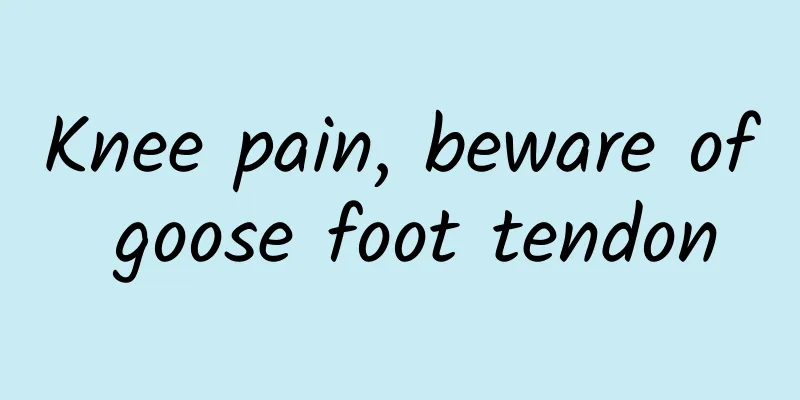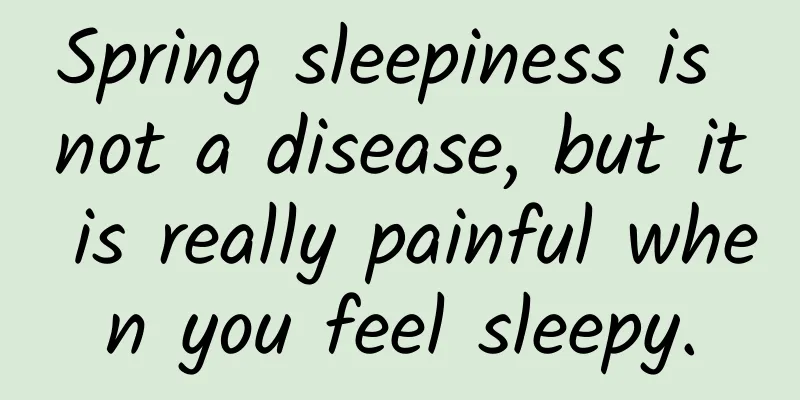Knee pain, beware of goose foot tendon

|
What is pes anserine bursitis? The goose foot (Pesanserinustendon) is the attachment point of the tendinous parts of the sartorius, gracilis, and semitendinosus muscles on the inner side of the proximal tibia. Its appearance is similar to that of a goose, so it is called a goose foot. A bursa is a small, flat sac filled with synovial fluid, which is a lubricant used to reduce friction between bones and muscles or between skin and tendons. It also acts as a shock absorber to reduce the impact of impact on joints. The anserine bursa is a shallow bursa located in the anserine foot, which covers the inner side of the tibial process of the knee joint, under this tendon group that resembles the anserine foot (the combined tendons of the semitendinosus, sartorius, and gracilis muscles of the thigh) (as shown below). Inflammation of this part is called anserine foot tendon bursitis, and its function is to prevent the lower limbs from rotating outward when walking or running. Mechanism of injury of anserine tendon bursitis Pes anserine bursitis is caused by constant friction and pressure irritating the pes anserine bursa. When irritation occurs, the bursa responds by producing excess fluid. The extra fluid causes inflammation and puts extra pressure on other areas near the knee. Pes anserine bursitis is often caused by 1. Repetitive activities, such as squatting, climbing stairs, and other frequently repetitive work or housework activities. 2. Improper physical training techniques, such as lack of stretching, sudden increases in running distance, or excessive uphill running. 3. Obesity. 4. Osteoarthritis of the knee. 5. Knee varus (i.e., "bow-legged" posture with knees tilted inward). 6. Turn your legs sharply with your feet touching the ground. 7. Injury, such as a direct hit to the leg. 8. Tight quadriceps (back thigh) muscles. 9. Torn cartilage in the knee. 10. Flat feet. Symptoms of pes anserine bursitis 1. Knee pain: pain that gradually develops in an area about 2-3 inches below the knee joint, located on the inside of the knee and/or the center of the shin, may extend to the front of the knee and down the leg, and causes pain that worsens during exercise, going up and down stairs, lying on the side, and standing up from a sitting or crossed leg position; 2. Knee muscle weakness and reduced range of motion; 3. Local swelling or pain on the inside of the knee joint when touched; Rehabilitation treatment of anserine tendon bursitis First 24 to 48 hours: 1. Avoid walking or any activity that causes pain, and rest and relax the painful area. 2. Apply ice to the area every 2 hours for 15 to 20 minutes each time. Recovery period: 1. Electrotherapy: Stimulating nerves through low-frequency electric current or other electrotherapy methods can help relieve pain, promote blood circulation and relieve muscle tension. 2. Shock wave therapy: produces physical stimulation to the treatment site, stimulates the production of growth factors, reduces local inflammatory reactions, promotes tissue regeneration and functional repair, and thus promotes the repair of local diseased tendon cells. 3. Ultrasound therapy: Ultrasound can penetrate deep into soft tissues and generate micro-vibrations, which helps to reduce muscle tension, promote blood circulation, and thus relieve pain. 4. Exercise therapy: Specific strengthening exercises can help reduce pain and improve knee function. Stretching exercises can also help maintain flexibility and reduce the risk of future recurrences. It is important to consult a physical therapist or doctor to develop an appropriate exercise plan because certain exercises can worsen symptoms if not performed correctly. ①Quadriceps static contraction: The patient lies on his back with his legs straight. Place a rolled towel under the affected leg with the heel on the ground and the toes pointing toward the ceiling. Tighten the thigh muscles and push the knee toward the towel. Keep the other leg still while pushing. Hold this position for 10 seconds, relax, and repeat. ②Heel sliding: The patient lies on his back with his legs straight. Slide the foot of the affected side toward his buttocks, bending the hip and knee. Keeping the knee pointed toward the ceiling, slowly return to the starting position, relax, and repeat. ③Quadriceps stretch: The patient stands up, uses a wall for support, and lifts one leg, grabbing the ankle or calf. Raise the leg as high as possible and try to keep the knee bent at a right angle. Hold for a few seconds, then repeat with the other leg. ④Hamstring stretch: Place the foot of the affected leg on a chair or step. Keeping your knee straight and toes pointed forward, lean forward from your hips and push your buttocks back until you feel a stretch in the back of your thigh. Hold this position and then repeat with the other leg. ⑤Single-leg squat: Stand behind a chair with your hands outstretched on the back of the chair. To work the affected knee, move the other foot back a little, just lightly touching the big toe to the floor. Do not use the back leg for this exercise; it is there to stabilize the body. Keeping your eyes level and your back straight, start squatting with the affected leg. If you feel strong enough, lift the back foot off the floor and continue with a single-leg squat. Exercises to avoid : In the early or acute stages of an injury, it is recommended to avoid activities that may cause pain, such as lunges, squats, squat jumps, and cross squats. Running, swimming breaststroke, and directional sports, such as squash, tennis, and football. Although anserine bursitis may cause discomfort to patients, through scientific rehabilitation treatment and preventive measures, patients can effectively alleviate symptoms and improve their quality of life. If symptoms persist or worsen, it is recommended to consult a professional doctor in a timely manner. |
<<: To understand thyroid disease, please pay attention to these seven issues
>>: Hypertension: The invisible "high-voltage line" dances with our health
Recommend
What to do if the vaginal discharge is excessive and yellow
Everyone knows that leucorrhea is a substance tha...
Causes of excessive vaginal discharge during pregnancy
Everyone must know the importance of pregnancy to...
This infectious disease is still spreading! Be careful when you go swimming or playing in the water!
Where are the most crowded places in summer? That...
Why do women have a bad smell down there?
I think everyone knows that normal female vaginal...
How to make old hen soup for pregnant women
Confinement during pregnancy is a very hard but h...
Trouble sleeping during early pregnancy
When we can't sleep in the early stages of pr...
What are the dangers of having sex one month after abortion?
Many female friends, due to lack of knowledge in ...
Will endometrial polyps disappear?
Endometrial polyps will disappear after active tr...
I have a little bleeding after having sex 50 days after giving birth. What's going on?
Moreover, pregnant women are prone to various min...
Can pregnant women drink red bean soup?
Every time pregnant women choose food, they alway...
What foods are better for gynecological inflammation?
Gynecological inflammation is a very big hidden d...
Fast heartbeat and headache after medical abortion
Cesarean section and medical abortion are two com...
Small test, big effect - learn about urine routine!
Urinalysis is one of the must-check items in ever...
What kind of body type does not have dysmenorrhea belong to?
For many female friends, they have to experience ...
Pain on both sides of lower abdomen during menstruation
The reason why women have menstruation is that wh...









